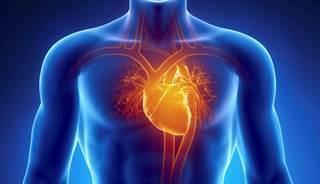News Taffy
| Post Your News Send Us An Event Start A Gallery |  |
| Most Recent | Most Popular | Top Contributors | Galleries | Events |
 | Contributor: admin subscribe to my stories |
 The Cardiologist's Wife - Discussing the Links Between Type II Diabetes and Heart Disease As our waists have expanded, our health has deteriorated rapidly over the last several decades. Heart disease is still the number one killer in the United States and the rate of new type II diabetes and dementia diagnoses is skyrocketing. Sadly most of our health problems are due to our lifestyle: the way we eat, the lack of exercise and unrelenting stress. Many people still seem to be unaware of the link between poor lifestyle choices and health or between diabetes and heart disease. Arkansas has the dubious distinction of being one of the most unhealthy states in the Union. This trend could be reversed with better health education of the general population. In order to understand how diabetes develops, you must understand how the body digests food and distributes nutrients to the body to use for energy. When carbohydrates are digested, they are broken down into glucose, a form of sugar the body can use for energy. The glucose is absorbed into the blood stream from the small intestine. The brain signals the pancreas to release insulin, a hormone whose job is to take the glucose to the cells of your body. Each cell has a “lock” and insulin acts as a “key” and opens the door for the glucose to enter the cell. This system works well when we eat healthy foods like fruits, vegetables and 100% whole grains that are digested more slowly, allowing a steady stream of glucose to enter the body. But when we eat simple carbs like white rice, white bread or sugary treats, too much glucose hits the blood stream at once. The pancreas releases more and more insulin to take care of all the glucose circulating in the blood stream. The cells can only use so much glucose at one time so they begin to resist the insulin’s attempt to give them more. The insulin must then find a place to store the excess glucose so it is stored in the liver for later use or as belly fat. After all the blood sugar has been used or stored, the brain sends out a signal that it needs more fuel quickly, starting the whole process again. If this is the daily norm, over time the cells become more and more resistant to insulin and/or the pancreas wears out, resulting in type II diabetes. Continuous high blood sugar levels can damage the blood vessels, allowing plaque and cholesterol to build up and form blockages. The arteries become stiff and hard, raising blood pressure and making the heart work harder. Excess abdominal fat, from all the extra stored glucose, releases harmful chemicals into the bloodstream that elevate blood pressure, cholesterol and triglyceride levels, further contributing to heart disease. Diabetes tends to raise triglyceride levels and lower HDL, the good cholesterol, further increasing the risk of heart disease and stroke. The good news is that you can take control of your health and prevent or reverse some of the damage you’ve already done. Exercise is still the single best thing you can do for your overall health, followed closely by choosing better foods to eat, like lean proteins, fruits and vegetables. The best exercise is that which you will do so find some activity you enjoy and get moving. Your life may depend on it. [+] add comment |














